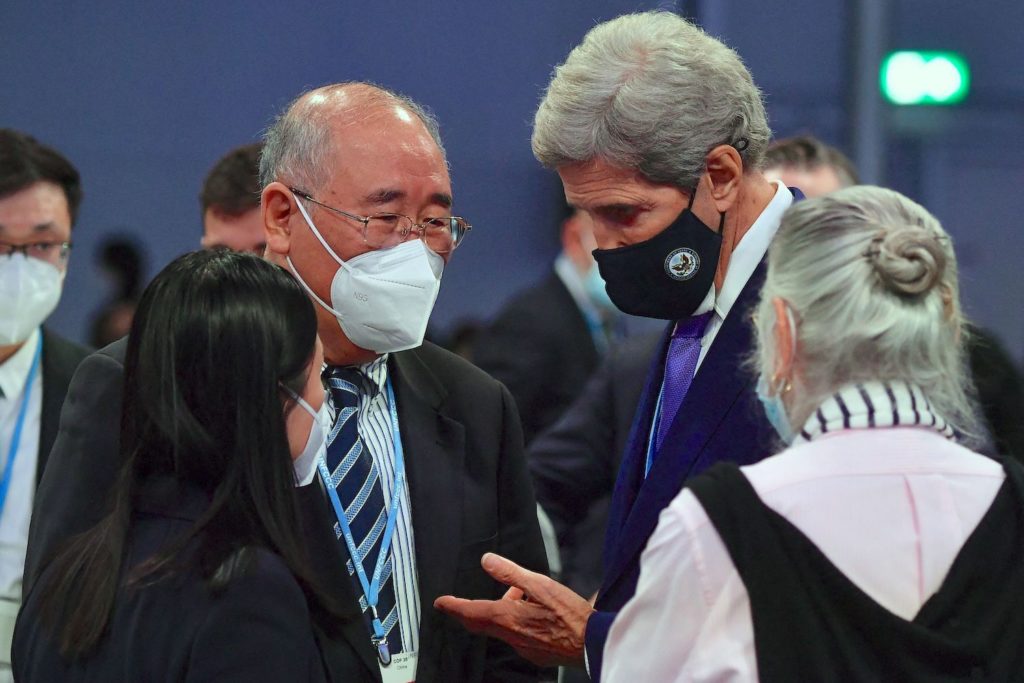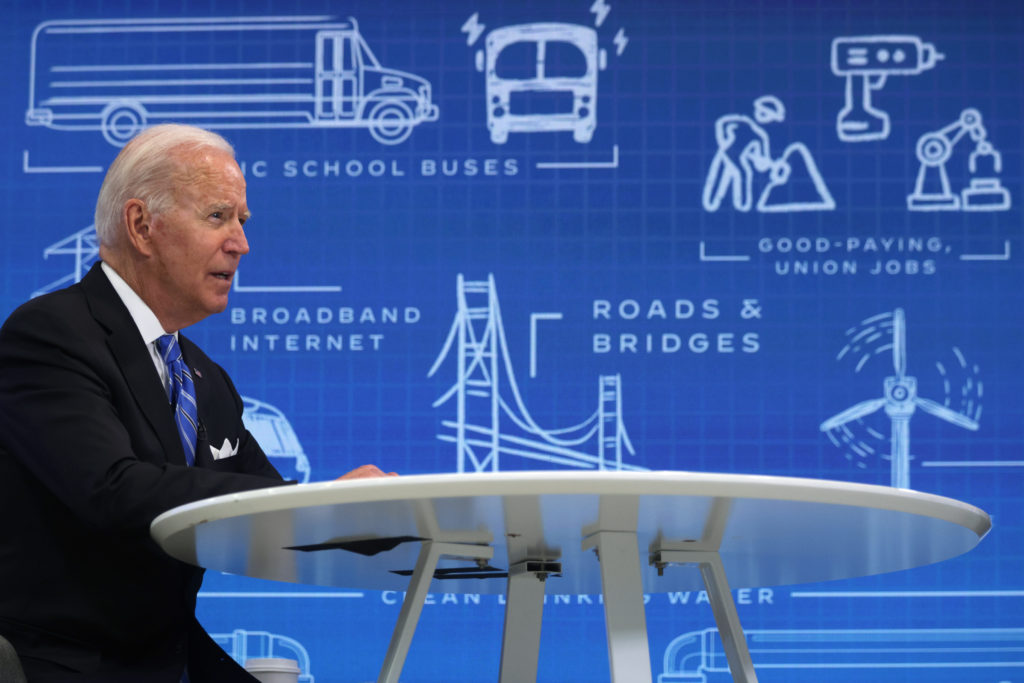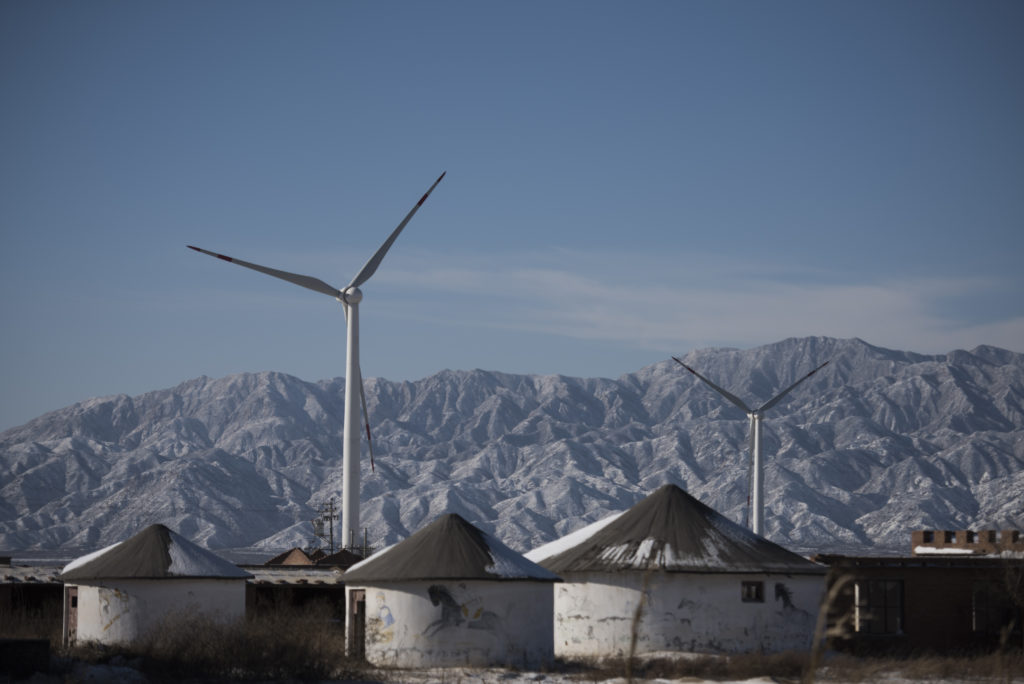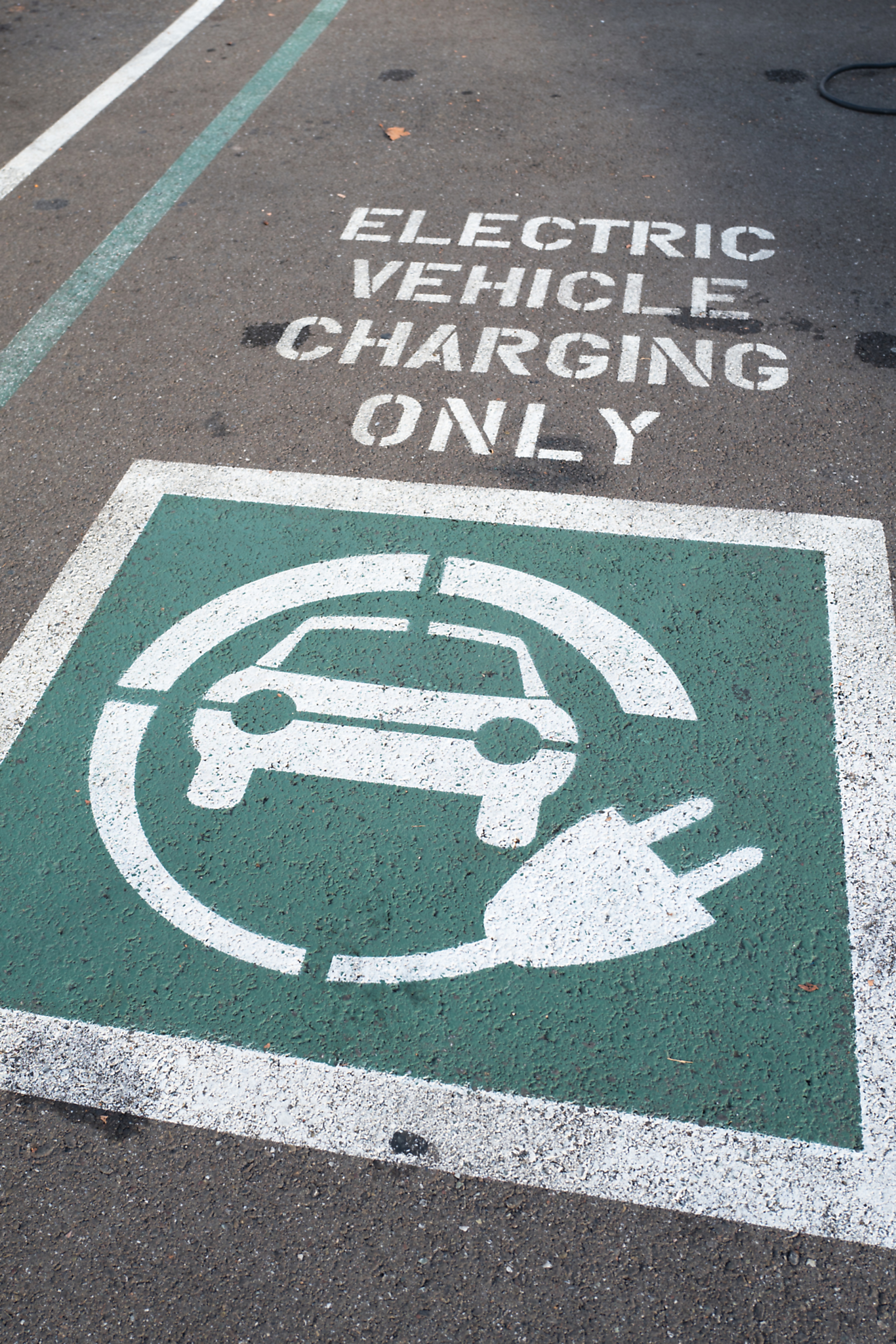In a dramatic move at the COP26 climate summit in early November 2021, the United States and China issued a joint declaration promising greater cooperation on climate in the 2020s.
The United States and China are the world’s two biggest greenhouse gas emitters and together account for about 40 percent of the world’s annual carbon output. The two superpowers have frequently clashed on the issue of climate change. In 2020, they accused each other of “environmental abuse” and “environmental damage.” Amid these disputes, and the broader deterioration of the U.S.-China relationship, this announcement from the world’s two biggest polluters definitely came as a surprise.
Wider U.S.-China Competition(s)
U.S. national security adviser Jake Sullivan described the state of the relationship between the United States and China as one of “intense competition.”
However, Jude Blanchette, the Freeman Chair in China Studies at the Center for Strategic and International Studies, emphasizes that relations between the United States and China “should be described as a series of competitions.”
The competitions that Sullivan and Blanchette refer to derive largely from three areas: national security issues, economic tensions and trade disputes, and ideological differences.
From a national security perspective, the rapidly growing economic, military, and technological power of China has Washington worried. The U.S. intelligence community believes that “China will continue pursuing its goals of becoming a great power, securing what it views as its territory, and establishing its preeminence in regional affairs by building a world-class military.”
One potential area that could spark a conflict between the United States and China is Taiwan. China has ramped up provocative military activities near Taiwan, raising concerns of further aggression against the island they claim as their own. Although the United States has maintained strategic ambiguity on its willingness to defend Taiwan, such aggression poses a real risk of bringing the United States and China into direct military confrontation.
Economic competition between the world’s two largest economies escalated when the Trump administration launched a trade war with China in 2018. This action significantly impacted other areas of competition between the two countries as well. The administration imposed punitive tariffs on China as well as tech-related restrictions designed to prevent China from dominating the advanced technologies market. The Biden administration is yet to remove the Trump administration’s tariffs, perpetuating a hostile economic policy toward China and further contributing to tensions.
Ideologically, the political and economic competition between Washington and Beijing is further complicated by significant value-based differences. The Biden administration has put human rights in the foreground of its dealings with China. For example, in his first call with China’s President Xi Jinping in February 2021, President Biden expressed “fundamental concerns” about China’s crackdown in Hong Kong and human rights abuses against its Uyghur population in Xinjiang.
For its part, China sees the United States’ promotion of democracy, free speech, and human rights as a means to exercise ideological dominance over the international order. In response to the Biden administration’s two-day Summit for Democracy in early December 2021, Chinese Foreign Ministry spokesman Wang Wenbin said, “No matter how the United States glosses over itself, its true face of seeking hegemony under the guise of democracy has long been exposed.”
“When the United States talks about the promotion of universal values such as human rights, democracy, or free markets, Beijing hears that as the United States sharpening its sword to penetrate China and to attack its political system.”
Jude Blanchette, Freeman Chair in China Studies, CSIS
Taken together, the political, economic, and ideological disparities between China and the United States reflect the struggle between two competing visions of political, economic, and ideological governance. Blanchette explains, “both the United States and China feel like they should play the dominant role in shaping the direction and architecture of the global order for the rest of the twenty-first century.”
Cooperation on Climate
Despite this intense rivalry, China and the United States have recognized the urgent need for cooperation on the issue of climate change. “Climate was always a way to keep talking even when everything else was very difficult in the relationship,” said Jonas Nahm, assistant professor of energy, resources, and environment at the Johns Hopkins School of Advanced International Studies.

Yet as other areas of competition become more intense, “it is making it very hard for narratives of cooperation on climate change to break through and get a seat at the table,” Blanchette stated.
The United States and China carry a special global responsibility with regard to climate change because of their roles as the world’s two biggest polluters and two largest economies. The United States has been the largest contributor to carbon emissions in the past 150 years and remains the largest per capita contributor today. In 2019, China surpassed the United States to become the largest emitter of CO2—contributing 27 percent of all global emissions. Their economic weight means that both countries are in a position to tackle the problem in a way few others can.
Like many other countries around the world, both China and the United States have been experiencing extreme weather and climate change-induced disasters such as record-breaking floods in China and intense winter storms and wildfires in the United States.
The U.S.-China joint declaration on climate change during the COP26 meeting in Glasgow manifests the two countries’ willingness to find areas to work together to tackle climate change-induced challenges. The countries need to move from symbolic gestures such as the COP26 joint declaration to effective policy changes.
One of the many goals laid out by China and the United States in the COP26 statement was to cooperate on “accelerating the green and low-carbon transition and climate technology innovation.” Climate experts agree that significant improvements will have to be made on renewable energy and other green technologies in order to meet global goals for reducing emissions. For example, Scott Moore, the director of China Programs and Strategic Initiatives at the University of Pennsylvania, emphasized that “we really need to move the world toward decarbonization by the end of this century, and eventually actually taking more carbon out of the atmosphere than we emit into it.” And as two of the global leaders in developing these technologies, the United States and China will each have a key role to play.
Nevertheless, as state-to-state cooperation between the United States and China is aggravated by the growing number of friction points in the relationship, how should subnational actors such as private companies interact on green technology projects?
On the one hand, U.S. and Chinese companies could be rivals, competing for the greatest market share in this sector and supported by heavy government investment and protectionist trade policy. On the other hand, the United States and China can act cooperatively, enabling their private firms to learn from each other and collaborate on green technological innovation. If the countries choose the direction of competition over cooperation on mitigating climate change, another frontier of competition between the United States and China would be green technology innovations.
New Era of Competition
If, as Blanchette argues, the U.S.-China relationship is “a series of competitions,” then the green energy competition between the two countries is just a part of that competition.
In seeking to dominate the green energy sector, both the United States and China have utilized subsidies, tariffs, and protectionist trade policies to bolster their own firms. While some of these restrictions are simply products of an antagonistic relationship, some argue that these measures serve important economic national security goals.
- Dual-Use Technology
technology that can be used for both peaceful and military aims
Security experts are concerned that climate cooperation with China could lead to the sharing of “dual-use” technologies, allowing for advances in key military technologies, such as improvements in robotics, artificial intelligence, unmanned and fully automated systems, space technology, and hypersonic weapons.
This competition-based approach is prominently discussed in Congress. However, if the U.S.-based green technology industry wants to compete with China, it will require bipartisan support and a bigger investment from the government. Without these investments, the United States does not have the manufacturing capabilities to sufficiently compete with China.
“I think with the right government policy and investment, U.S. companies can be in the lead of developing and deploying those technologies.”
Scott Moore, Director of China Programs and Strategic Initiatives, University of Pennsylvania
A hard stance on China is something that both sides of the aisle can agree on. While Senate minority leader Mitch McConnell has long been an avid supporter of the coal industry, he has expressed openness to a climate policy based on “American values and American capitalism—through technology and innovation.”

The recent passing of the Infrastructure Investment and Jobs Act, which is commonly referred to as the Bipartisan Infrastructure Bill, provides hope that these much-needed investments are within reach. The package includes two major areas of funding that can help the United States reach these domestic goals. These include an investment of $7.5 billion for zero- and low-emission buses and ferries, which aims to deliver thousands of electric school buses to districts across the country, and another $7.5 billion to build a nationwide network of plug-in electric vehicle chargers.
These major investments could help American companies develop and produce green technology without relying on Chinese manufacturing or create larger markets for their products in the United States. But even with these investments, the United States will be playing catchup to China, which has already bolstered its domestic green technology center with major investments and incentives.
A Technological Chess Match
The two governments that have done the most to promote the manufacture and use of electric vehicles (EVs) are China and state of California. The California state government’s Zero-Emission Vehicles (ZEV) Program sets annually increasing EV production targets. Manufacturers that fail to meet them have to buy ZEV credits from the companies that exceeded their production quota.
China used this initiative as inspiration for its own new energy vehicle (NEV) credit trading program. The NEV program forces manufacturers to produce more fuel-efficient cars that pollute less. China’s Ministry of Industry and Information Technology finalized a mandatory production quota—carmakers whose annual sales exceed 30,000 are required to produce no less than 10 percent NEV’s in their total car production. By 2023, this number will go up to 18 percent.
While these Chinese policies seek to replicate California’s success, the Chinese government has also taken its own strides in innovation. In an article by author Michael Schuman in The Atlantic, he writes that Brian Gu of XPeng, China’s leading EV company, said that the Chinese government generally allows businesses to push forward with their research and test their technologies. China’s EV sector has benefitted from this, racing ahead of the United States, which worries Washington. Schuman argues these successes represent not only economic victories for Beijing but also serve to bolster China’s entire economic and political model in their broader ideological competition with the United States.
China’s investments in this sector are motivated in part by competition with the United States. But they also come in response to extensive public demand to solve environmental problems such as smog. Public opinion polls in China consistently show that citizens there are concerned about environmental degradation. Furthermore, poor air quality in its largest cities has been a source of embarrassment for the government.
“China wants to portray itself as a real global leader and as an equal or as a peer to other large economies like the United States or the European Union in really taking aggressive and ambitious steps and being a leader in trying to tackle this fundamentally shared challenge.”
Scott Moore, Director of China Programs and Strategic Initiatives, University of Pennsylvania
The Bipartisan Infrastructure Bill allocates an additional $174 billion for constructing a network of EV charging stations, aiding automakers, and offering rebates and tax breaks to buyers. Another $50 billion will go to manufacturing and research. President Biden believes that this will put the country in a position to win the global competition with China. This funding enables the potential to scale up some of California’s green policies to a national level.
The United States and China are both trying to be the leader in green technology and want to achieve this without relying on each other. Although this level of competition might seem problematic for two countries that are as so intertwined, there are advantages to the two countries viewing each other as competitors. In an article in The Diplomat, Moore argues that “the most compelling rationale for boosting public investment in areas like battery storage or hydrogen fuels is to help countries compete, not cooperate, more effectively.” Particularly in the United States, where funding for green technology struggles to find bipartisan support, competition with China can draw support from constituencies who might otherwise not prioritize these investments.
In spite of the Chinese and U.S. governments fueling this competitive relationship, private companies can and have still benefited from working with one another. While government policies have put up roadblocks, private companies have continued to form partnerships which have led to innovations that would not have been possible in isolation.
Collaboration amid Conflict
While both the United States and China have worked to bolster their green technology sectors, it remains difficult for either to perform the sophisticated research and manufacturing that these technologies demand entirely domestically. So green technology companies in both countries have done what companies so frequently do in a globalized economy—work with foreign partners when such collaboration can yield a better, cheaper, and faster end result.
Collaboration between U.S. and Chinese firms occurs widely in the innovation and production of green technologies. However, restrictive U.S. and Chinese trade policies could make such collaboration more difficult in the future.
Some proponents of domestic innovation in green technology aim for full U.S. control of the green technology supply chain. Full supply chain capabilities, however, from invention to manufacturing, may be unrealistic or at least far off in the U.S. solar and wind industries.
According to Nahm, creating a manufacturing structure in the United States to even begin to compete with Chinese firms would require “at least ten years” of investment in infrastructure capacity building.
Such delays could have disastrous consequences for the global effort to combat climate change. Collaboration in green technology innovation is necessary to remain below the 1.5–2 degree Celsius goals that scientists herald as crucial to avoiding catastrophic climate disaster.
“The United States shouldn’t close the border to Chinese clean energy products because we cannot meet our climate goals without them.”
Jonas Nahm, assistant professor of energy, resources, and environment at the Johns Hopkins School of Advanced International Studies
Unrestricted collaboration between U.S. and Chinese clean energy companies also allows for faster and broader production of clean energy materials. Blanchette recognizes cooperation between energy firms as a great avenue for “scaling up low-carbon technology development and deployment globally.”
Collaboration in green energy tech development can be both feasible and mutually beneficial, according to Blanchette, who cites the importance of increased cross-border mergers and acquisitions and international collaboration in research and development. Advances in wind turbine and solar energy technological innovation since the start of the twenty-first century have demonstrated a capacity for U.S. and Chinese firms’ supply chain collaboration.

Silicon Ink: Collaboration in Solar Cell Advancement
Collaboration between U.S. and Chinese firms in the global supply chain has led to mass-produced, affordable clean energy technology deployed around the world.
The collaborative development agreement between JA Solar, a Chinese clean energy firm, and Innovalight, an American green tech start-up, developed solar panels that increased efficiency by about 20 percent.
With funding from the Department of Energy and the National Renewable Energy Laboratory, Innovalight created silicon ink, a nanomaterial that increases solar cell efficiency.
Innovalight, however, had no experience in large-scale manufacturing and was unsuccessful in attracting funders to build a manufacturing facility where they could produce solar panels domestically.
Instead, they turned to Shanghai, where JA Solar, one of the largest solar-cell makers in the world, took on manufacturing.
The innovative ability of U.S. firms to create silicon ink forged huge strides in the efficiency of solar energy, improving the ability of the energy source to replace fossil fuels. This domestic innovation, partnered with a Chinese firm’s manufacturing capacity, brought new technology to the world in larger quantities, and affordable prices.
The CEO of Innovalight recognized a need for collaboration with the Chinese company saying, “innovation will be the heart of the U.S. strategy, and although it might not create the same scale, we’re exporting well-protected technology to China and creating well-paying jobs here.”
This technology significantly increased the efficiency of solar energy, improving the ability of the energy source to replace fossil fuels. This domestic innovation, partnered with a Chinese firm’s manufacturing capacity, brought new technology to the world in larger quantities and at affordable prices.
Firm Collaboration in Gearboxes for Wind Turbines
In a similar partnership, the American firm General Electric (GE) collaborated with German and Chinese manufacturers to meet mass production demands for more efficient wind turbines.

General Electric acquired several small wind turbine start-up companies in the 1990s and harnessed them to collectively invent control software and new turbine technologies. Specifically, the development of wind power gearboxes enhanced wind turbines’ rotational speed, increasing the amount of energy they could harness.
The Nanjing firm NGC began working with GE in 2006 to provide mass manufacturing for GE’s gearboxes. This firm-to-firm collaboration to mass produce clean energy products demonstrated the unique capability that Chinese companies hold—the capacity for innovative manufacturing.
Despite being the largest wind turbine manufacturer in the United States, GE still relied on NGC to manufacture new technology at a commercial scale. This specialization of Chinese manufacturing firms allows for the broader dissemination of cheap wind-harnessing technology.
Clean Energy Innovation Is Not Zero-Sum
Green energy development completed entirely in either China or the United States benefits both countries even when they do not collaborate. Developing green technologies in China decreases the cost of raw materials, increasing the capacity of American green technology firms to innovate.
Jennifer Turner, the director of the China Environment Forum at the Woodrow Wilson Center, recognizes innovation in green technology globally not as competitive or collaborative, but as public investment. In the solar energy industry, Turner said that “Chinese production of inexpensive solar PV panels” enabled the United States and other countries to “start ramping up clean energy investments” while also bringing down the price of solar energy.
Chinese firms’ mass manufacturing of clean energy technologies brings down the global cost of not only these technologies but also the energy that they create.
China’s commercialization of clean energy deployment expands global access to green technologies even when innovation occurs entirely domestically.
Fully domestic supply chains, brought about by competitive trade and national security policies, still marginally aid global climate change efforts by decreasing the price of green technologies globally. However, if China and the United States increase the openness of trade, then utilizing the research and innovative manufacturing capabilities of both the U.S. and Chinese economies would optimize each country’s specializations in green technology.















